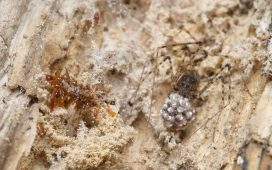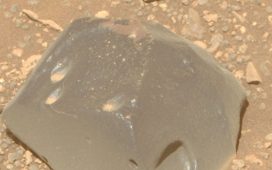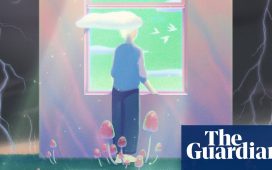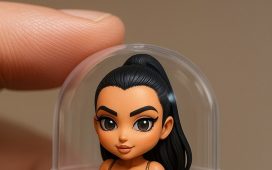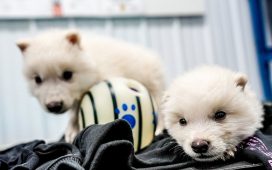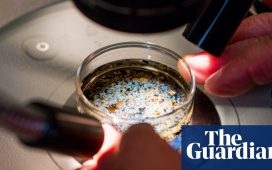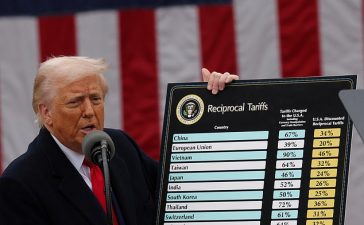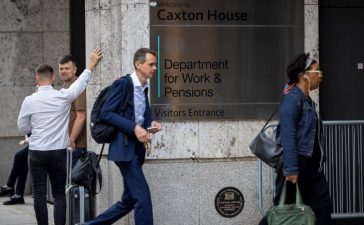One day in 1996, someone ate a McDonald’s McChicken burger in Amsterdam.
Perhaps it was a quick bite after work? A leisurely stroll down the canals? A family outing? These details are lost to time, but others are hard to erase completely.
This meal left a permanent mark on the local environment when a nesting coot found the discarded McChicken wrapper and decided to use it to line its nest, where it remained.
“It really shows that it’s not just us humans who are writing history, but also these birds are taking notes, keeping a score and then documenting our throwaway society,” said the nest biologist Auke-Florian Hiemstra, who has been researching the influence of the Anthropocene era on birds’ nests in Amsterdam’s canals.
Hiemstra is a researcher who works on animal architecture and specialises in builds made with artificial material. When investigating nests in the canals, he found a variety of old packaging discarded from the early 1990s up to last year.
The Eurasian coot only started to migrate to Amsterdam in the late 1980s and Hiemstra’s findings of packaging from 1994 could show the entire life span and heritage of the species’ existence in the area.
Hiemstra identifies the year from which the packaging originates using best before dates or researching the era in which the logo designs were used.
Some of the nests have packaging from more recent foods, which gives researchers a more accurate date of when the nest would have been built. “One nest had a package of fresh milk, and so we knew that the expiry date could not be that far from the day that it was consumed,” he said.
Some relics found in the nests include Mars bar packaging advertising the 1994 World Cup, while a more recent nest was made with a layer of face masks, a lasting impact of the waste from the Covid-19 pandemic.
While a bird’s nest is usually made from twigs and moss, the abundance of plastics has been helpful for birds in the city where natural items are in short supply.
Hiemstra said there would probably be a return of natural nests if people focused on regreening cities and bringing natural water vegetation back, but in the meantime the birds were successfully working with what they had.
“We had this very polluted swan nest in Amsterdam, and everyone was talking about it, saying ‘such a shame’ and ‘what a horrible nest’,” he said. “However, the swan was very happy with the nest and it had five chicks, and they all made it to adults. For the swan it was a very successful nest. In a way, the same goes for the coots.
“Our litter for them is not a waste product but something very valuable. I really hope we can learn something from these animals to re-evaluate how we think about our materials. These plastics are a wonderful material yet we use them for single use and throw them away.”
after newsletter promotion
“It’s really frustrated me, the term ‘throwaway society’. The ‘away’ is not a specific place, ‘away’ is still here,” Hiemstra said.
“Around 80% of all the plastics that [have ever been] produced are still on the planet right now somewhere.”
Plastic can take 20 to 500 years to decompose and according to the Organisation for Economic Co-operation and Development only 9% of plastic is actually recycled.
Hiemstra said we were more aware of the dangers of single-use plastic, but the research showed damning evidence of damage that had already been done.
“We all know that plastic does not fall apart – in the 50s it was praised that this material does not fall apart. Now, we are a little bit afraid because it does not fall apart. Our thinking about plastics has really changed.
“We know that it doesn’t fall apart but finding these materials that have been littered 30 years ago, yet they look as fresh as they were just littered yesterday; that really gave me the chills. This material is really here to stay.”

